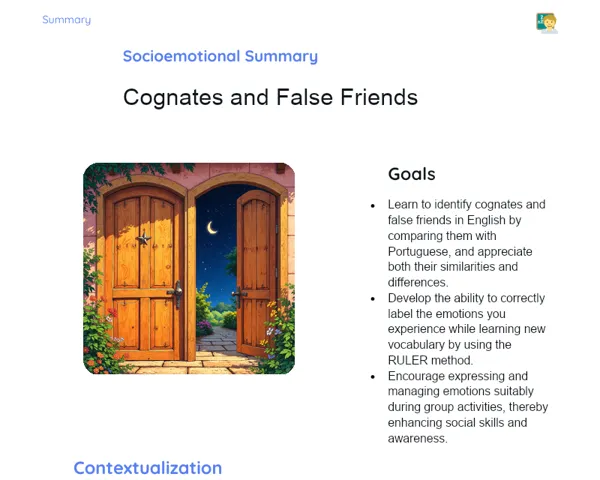Objectives
1. 🎯 Recognise and use the adjectives 'short', 'tall', 'slow', and 'fast' effectively in different contexts.
2. 🎯 Understand and describe physical traits and speeds using the appropriate adjectives.
3. 🎯 Enhance skills in association, creativity, and oral expression through engaging and practical activities.
Contextualization
Have you ever noticed that adjectives like 'short', 'tall', 'slow', and 'fast' do more than merely describe people or objects? They also help express moods and situations encountered in our daily life. For instance, when we say a movie is 'fast-paced', we mean that the story unfolds quickly. Such words play an important role in making our communication clear and vivid in English, thereby enriching our conversations. Thus, getting a firm grasp of these adjectives is key to boosting both fluency and precision in the language.
Important Topics
Adjective 'short'
The adjective 'short' is used to describe something that does not extend very far in height or length. In everyday communication, we often apply 'short' to people, objects, or even distances when we compare them with others that are longer. For example, one might say a child is 'short' compared to an adult.
-
Highlights a height or length that is less than what is typical.
-
Used to compare people, objects, or distances.
-
Assists in forming a clear visual image during discussions.
Adjective 'tall'
In contrast to 'short', the adjective 'tall' describes something that has a considerable height or length. It is commonly applied to people, buildings, or any object that stands out because of its height. Think of a tall building or a tall person when visualising this term.
-
Describes something with a height above the usual standard.
-
Used to refer to people, objects, or structures in various contexts.
-
Helps in precise physical descriptions when conversing.
Adjective 'slow'
The adjective 'slow' refers to something that happens or moves at a leisurely pace compared to the norm. This term is very useful when describing actions or speeds that are not quick. For example, a car could be moving slowly, or someone might be taking a slow walk.
-
Indicates a movement or action that is not brisk.
-
Can be applied to speeds, processes, or even individuals.
-
Essential for detailing the pace or intensity when describing activities.
Key Terms
-
Adjective: A word that modifies a noun, highlighting a particular quality or feature.
-
Comparative: A form used for comparing two items or groups.
-
Superlative: A form employed to express the utmost degree of a quality or quantity.
For Reflection
-
How does using adjectives like 'short' and 'tall' alter our perception of a person or object?
-
Why might it be necessary to use the adjective 'slow' in some scenarios rather than just saying something is 'slow'?
-
In what ways does understanding and correctly applying adjectives improve our everyday communication and grasp of English texts?
Important Conclusions
-
Today, we delved into using the adjectives 'short', 'tall', 'slow', and 'fast' which are crucial for describing physical attributes and speeds in English.
-
We observed how these adjectives function in different contexts, enhancing our communication and expression.
-
We saw the importance of choosing the right adjectives to convey clear and precise information, thereby improving our fluency and descriptive skills.
To Exercise Knowledge
Keep an adjective diary: For one week, observe and jot down adjectives that describe people and items around you. Make a conscious effort to use 'short', 'tall', 'slow', and 'fast' wherever you can. At the end of the week, reflect on how using the right adjectives can change your perspective and the way you communicate.
Challenge
Fast Video Challenge: Use your smartphone or camera to record a 1-minute video where you describe various objects in your home using the adjectives 'slow' and 'fast'. Try varying your tone and facial expressions to highlight different speeds. Share your video with your friends or family and see if they can guess the objects you’re mentioning!
Study Tips
-
Watch movies or television series in English and pay close attention to how adjectives are used. Identify 'short', 'tall', 'slow', and 'fast' and note the context in which they appear.
-
Practice with English learning apps that include vocabulary and pronunciation exercises for adjectives. This will reinforce what we covered in class.
-
Make flashcards for these adjectives along with their meanings. Use them in sentences during your regular revisions to help consolidate your learning.


